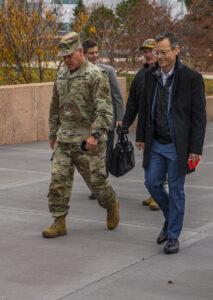
The test of a Russian direct ascent anti-satellite (DA-ASAT) weapon against one of that nation's non-functioning satellites generated more than 1,500 pieces of trackable debris and hundreds of thousands of smaller pieces, U.S. State Department spokesman Ned Price said on Nov. 15. If true, the ASAT test would have thrown off roughly half the debris of a 2007 Chinese DA-ASAT test that created 3,000 pieces of orbital debris larger than 10 centimeters (Defense Daily, Nov. 17, 2020). Army Gen. James…














